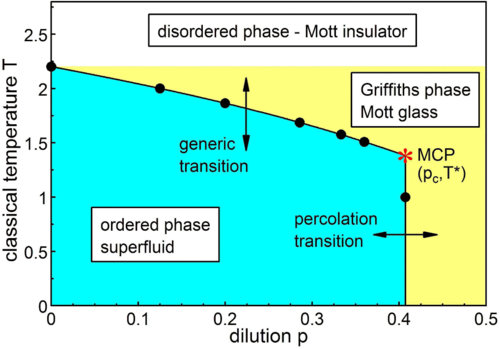Physics
Quantum Materials and Quantum Phase Transitions

In systems of interacting quantum particles, the interplay between quantum coherence, Coulomb interactions, disorder and topology can produce novel, exotic states of matter. These states which include superconductors, spin liquids, electronic liquid crystals as well topologically ordered phases often feature macroscopic properties that are intrinsically quantum in nature. Identifying and characterizing these novel phases is a central challenge of modern physics. Quantum phase transitions between different ground state phases play a central role in this endeavor because the peculiar excitations of quantum critical ground states lead to unusual thermodynamic and transport properties in large regions of the phase diagram. Moreover, the fluctuations associated with quantum phase transitions often themselves induce novel phases, thus further increasing the complexity of quantum matter. Research has shown that many quantum phase transitions do not follow the usual paradigms for thermal phase transitions. As a result, many quantum phase transitions are still poorly understood.
Phase diagram of the classical XY model as a function of classical temperature and dilution. MCP is the multicritical point that separates the generic and percolation transitions. The big dots mark the numerically determined transition points. The lines are guides for the eye only.
Principal Investigator
Thomas Vojta
Professor
573-341-4793 | vojtat@mst.edu |
204 Physics building
Quantum, classical and nonequilibrium phase transitions, critical behavior, magnetism and superconductivity in correlated quantum materials, transport in disordered media, quantum field theory, renormalization group, Monte-Carlo simulations.
